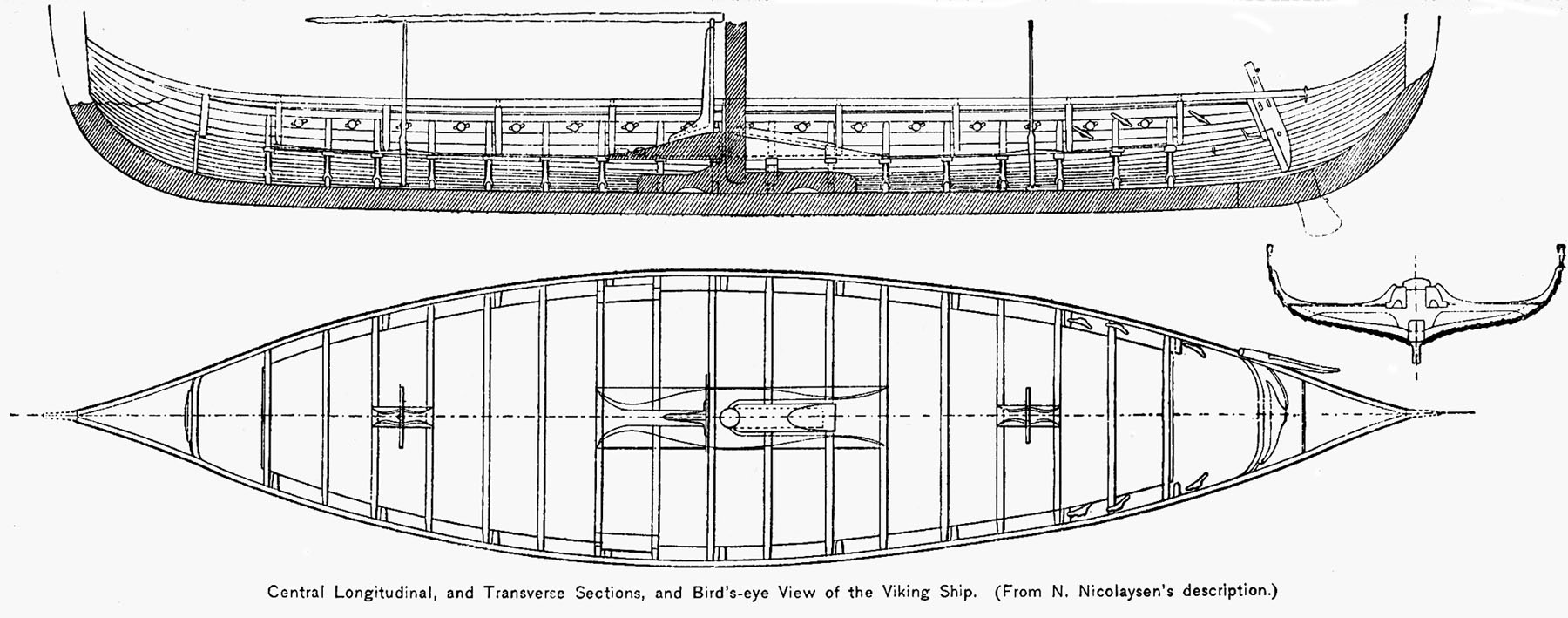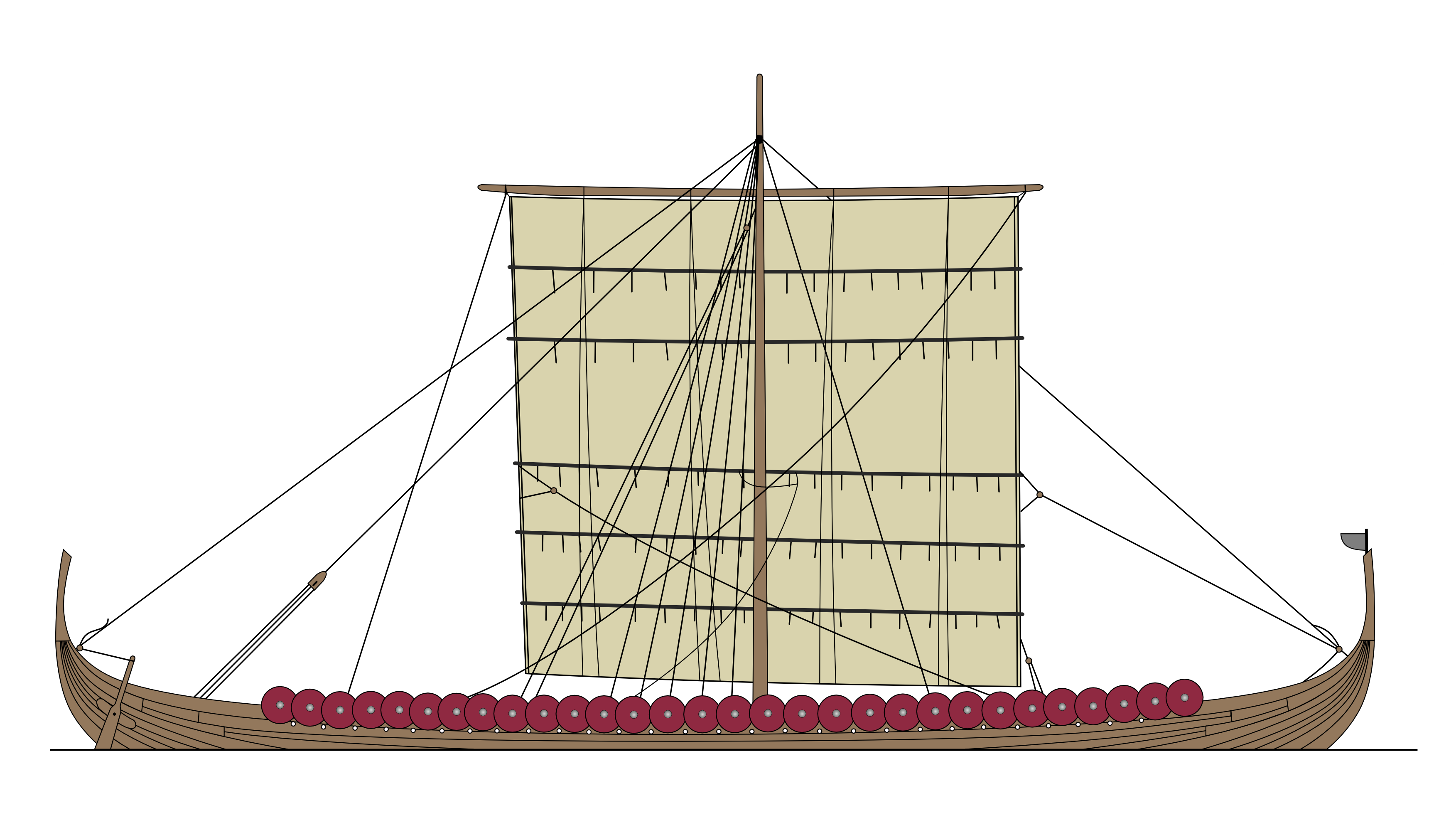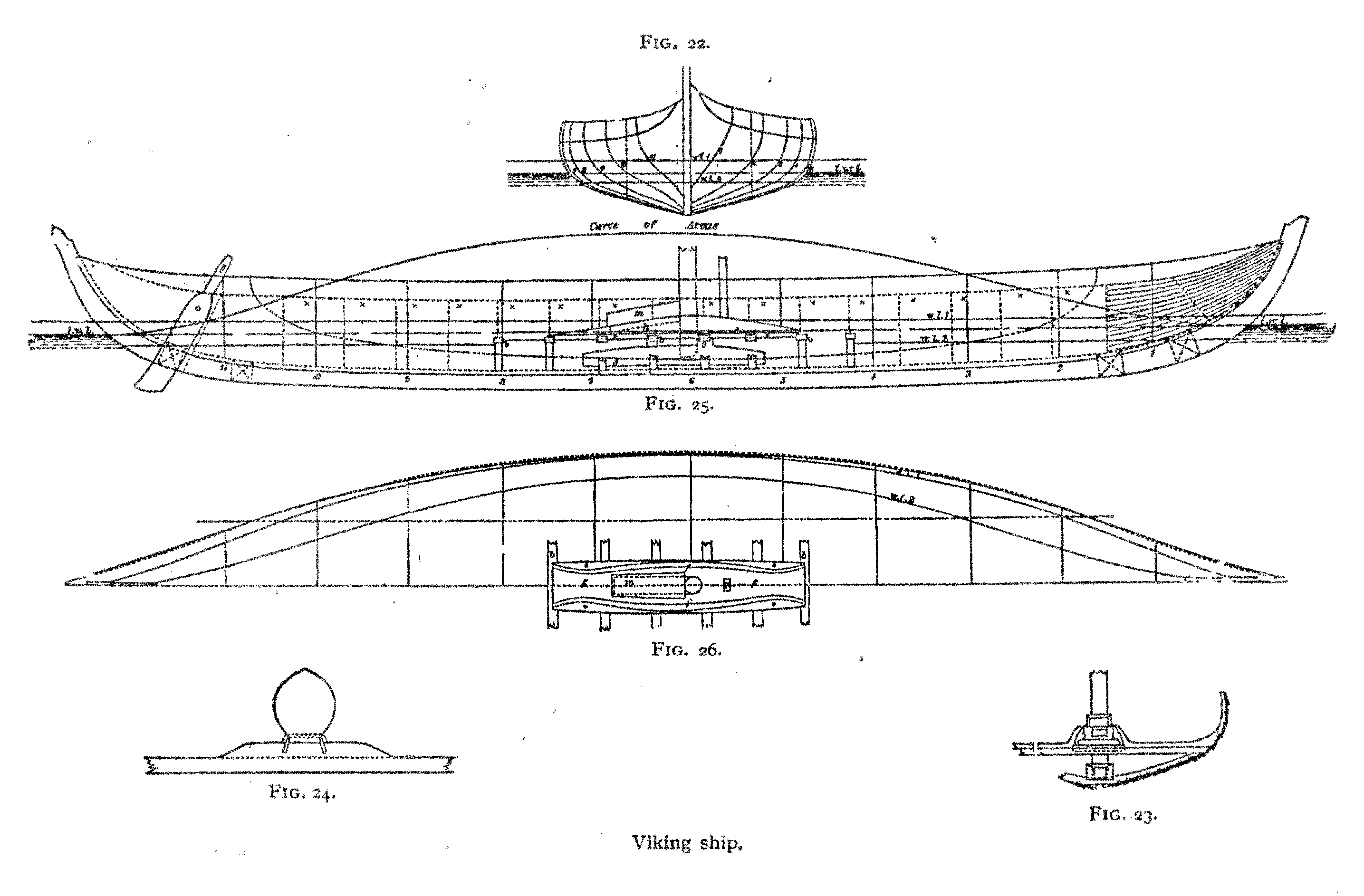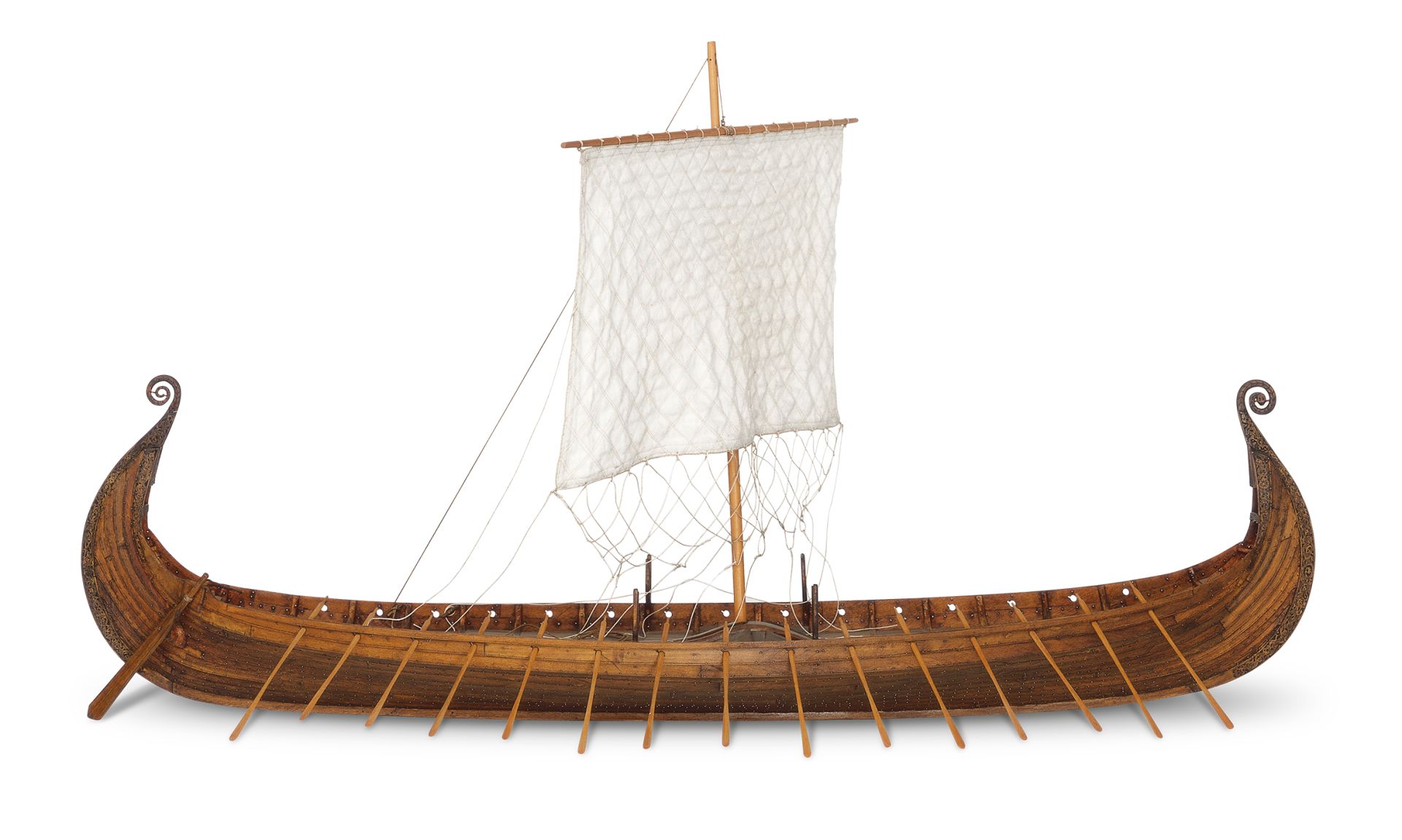
Constructing a longship How It Works Magazine
Parts of a Longship Viking longships were made up of several parts, including: Oars: Longships had between 24 and 50 oars, depending on their size. They could be pulled inside through the oar-port in shallow waters. Sail: Each ship had a big, brightly coloured square sail which was woven from wool.

Gokstad Viking Longship The Model Shipwright
History The Viking longships were powerful naval weapons in their time and were highly valued possessions. Archaeological finds show that the Viking ships were not standardized. Ships varied from designer to designer and place to place and often had regional characteristics.

Pin by Pavel Shipilin on Судостроение викингов Viking ship, Viking
The prow of the Oseberg ship in the Viking Ship Museum in Olso, Norway (photo by Grzegorz Wysocki) Even before the Viking Age, ships were an indispensable part of the Scandinavians' lifestyle.Their homeland's numerous waterways, its sheer amount of land abutting the sea, and its effective separation by water from the rest of the Eurasian continent meant that the Scandinavians had to travel.

Gokstad Viking Longship The Model Shipwright
the upper edge of the side of a boat. oarports. the holes on the side of the ship that hold the oars. figurehead. a carved figure on the front (bow) of a boat. rigging. the ropes used to support and work the masts, yards, sails, etc., on a ship. Study with Quizlet and memorize flashcards containing terms like mast, keel, strake and more.

Viking Boat Layout. More Viking Power, Viking Life, Viking Warrior
Indeed, the Viking Age, from A.D. 800-1100, was the age of the sleek, speedy longship. Without this crucial advance in ship technology, the Vikings would never have become a dominant force in.

Image result for viking ship diagram Viking ship, Vikings, Viking history
The ships were powered by oars or by the wind, and had one large, square sail, most probably made from wool. Leather strips criss-crossed the wool to keep its shape when it was wet. Viking ships also had oars. A steering oar or 'steerboard' was used to steer the ships. It was fastened to the right-hand side of the ship at the stern (back).

Pin by Erika W Lähde on Ancient Ships Warship, Boat, Viking ship
Trade was a vital part of Viking society, and their ships played a crucial role in facilitating this. The knarr, with its large cargo capacity, was the primary vessel used for trade. These ships could carry a wide variety of goods, including furs, wool, grain, and precious metals, which were traded with other societies for items such as silk, spices, wine, and jewelry.

How Viking ships were made
One person. It's this. exciting, vivid depiction of a dragon or sea serpents twisting together, biting tails. The scales on the skin are picked out with these carefully etched lines. And while.

Vikings of Bjornstad Viking Ship Terms Viking ship, Viking longship
Quick Facts: The Viking ship was a strong durable ship that allowed the Norsemen of Scandinavia sail long distances and raid far away kingdoms. Date: 700-1100AD Floki Vilgerdarsson Floki Vilgerdarsson Viking ship { {PD-Art}} Overview Gallery Additional Resources Viking ships were very versatile.

the viking longship labelling diagram is shown in red, white and black
The contruction of the ship. Viking Age ships were both light and strong. There are two main reasons for this: The planks and frames were cleaved and followed the tree's fibres. This made the finished pieces very strong, even though their dimensions were reduced due to a desire to keep the overall weight of the ship down.

Le navi vichinghe VitAntica Viking longship, Viking ship, Longship
The Vikings had several types of ships: warships, merchant ships, everyday ships, etc. All the boats carried sails and most of them could also be rowed, but this did not apply to the heavy merchant ships.

Parts of a Viking Ship Diagram Quizlet
The Ship's Crew. The Norwegian Gulating law From the 1100 - 1200 is the most in depth text about organisation and hierarchy on board the long ships in the Viking Age. It includes several passages about the building process, manning the fleet, rules for the skipper, steersman and cook and war equipment. Fra museets mange forsøgsrejser ved vi.

Gokstad Viking Longship The Model Shipwright
Features of a Viking Ship The Hull of Havhingsten (c) TBirkett. CC BY NC Clinker Construction One of the defining features of Viking ships are their clinker-built construction, with overlapping side planks (or strakes) fixed together with iron clinker nails.

Amazing 10 Vikings Long Ship Facts Learning Mole
The Viking ships' square sail was, in size and shape, developed together with the individual hull size and type of ship. The central crucial factor is the elementary balance between hull, sail and rudder when sailing against the wind, i.e. sailing close-hauled. If the sail is too broad relative to the hull and the shape of the hull, the ship.

Viking Longboat Facts About Viking Boats DK Find Out
Key Take Away Points The Vikings were maritime people who relied on their ships for trade, commerce and warfare as well as exploration. The Viking Age saw the expansion of the Vikings to different parts of Europe, Greenland, and North America.

Viking ship construction. Illustration by Angus McBride. Viking ship
Viking ship A modern replica of a Viking ship. This ship is of the snekkja longship type. Viking ships were marine vessels of unique structure, used in Scandinavia from the Viking Age throughout the Middle Ages.